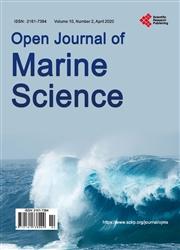引用次数: 3
摘要
目前,在墨西哥的特万特佩克湾(GT),凡纳滨对虾的渔业继续被过度开发。从现有文献中可以看出,自1993年以来,GT实施的海洋封闭系统没有充分发挥作用,因为这些系统完全保护海洋招募季节,而生殖季节只被认为是部分保护。由于这些问题,文献中提出了新的海洋封闭系统,但由于没有包括海洋和泻湖的招募信息,因此没有被GT渔民接受。因此,本研究对两种招募类型进行了分析,并估计了招募年龄(RA)及其与总长度和体重的关系。对于Cabeza de Toro la Joya Buenavista泻湖系统(CTJB-LS),得出的结论是,年轻新兵向CTJB-LS外部迁移的时间为3至5米,其中4米的新兵流量最高。因此,这最后的年龄被称为L. vanamei的RA(在106毫米)。6 ~ 7月是海洋生物最多的季节,10月是海洋生物最多的繁殖季节。在两个招聘季节,观察到生物量产量不同。在海洋季节,RA比相同大小的泻湖季节多记录8.4 g。研究结果用于讨论atarraya网的使用,并建议在7月份在GT的泻湖系统内实施泻湖关闭。根据该建议,手工渔民将被允许在6月份使用网孔为25.4 mm的atarraya网,他们将获得良好的生物质生产水平作为经济支持。此外,新的海洋封闭系统将保护虾的繁殖季节(从7月到11月)。本文章由计算机程序翻译,如有差异,请以英文原文为准。
Recruitment Age of Litopenaeus vannamei (Boone, 1931) (Decapoda: Penaeidae) in the Cabeza De Toro-La Joya Buenavista Lagoon System, Oaxaca-Chiapas, Mexico
At present, the fishery of Litopenaeus vannamei continues overexploited in
the Gulf of Tehuantepec (GT), Mexico. From the available literature it was
demonstrated that marine closure systems implemented in GT have not
worked adequately since 1993, because these are completely protecting marine
recruitment seasons, and reproductive seasons were only partially considered
to protect. Due to these problems, new marine closure systems were proposed
in the literature, but they were not accepted by fishermen from GT because
they did not include marine and lagoon recruitment information. For this
reason, in this study both recruitment types were analyzed with estimations
on the recruitment age (RA), and its relationship with total length and weight.
To the Cabeza de Toro la Joya Buenavista lagoon system (CTJB-LS), it was
concluded that young recruits migration toward outside CTJB-LS elapsed between
3 and 5-m-olds, with the highest recruit flow in 4-m-olds. Thus, this
last age was called the RA of L. vannamei (at 106 mm). Maximum marine recruitment
ranked from June to July, and maximum reproductive seasons were
in October. In both recruitment seasons it was observed that biomass production
was different. In marine season RA recorded 8.4 g more than lagoon season
at the same size. Results were used in order to discus about atarraya nets
uses, and to propose the implementation of a lagoon closure during July inside
lagoon systems located in GT. With this proposal artisanal fishermen will
be allowed to use atarraya nets with mesh opening of 25.4 mm during June,
and they will obtain a good biomass production level as economic support.Additionally, with new marine closure systems shrimp reproductive seasons
will be protected (from July to November).
求助全文
通过发布文献求助,成功后即可免费获取论文全文。
去求助

 求助内容:
求助内容: 应助结果提醒方式:
应助结果提醒方式:


